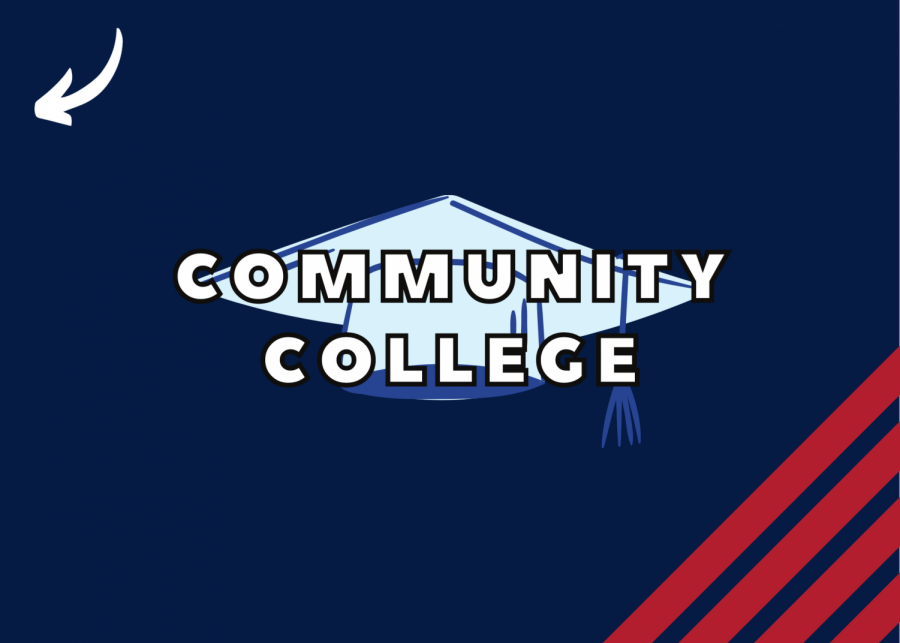An emerging alternative
Examining opinions surrounding community college in light of the COVID-19 pandemic and the recent increase in community college enrollment

MVHS ‘20 alum Allen Li’s typical day now consists of waking up at 10 a.m., occasionally eating breakfast, watching online lectures, working on a “research thing” and then going back to sleep. He had planned to attend the University of Michigan in person, but is instead taking online classes at the college due to the pandemic. When Li decided which college he was going to attend, he didn’t take the pandemic into account.
“Honestly, I would heavily have considered going to a UC instead,” Li said. “Because [especially] right now, the education does not really feel worth the money.”
While he feels like his in-person academic experience would be similar to his current situation, he believes one key difference is the current lack of structure in his life. He believes that this could be remedied if he was required to attend lectures in-person regularly.
MVHS ‘20 alum Max Goeltner had also planned to attend a four-year college: Laguna College of Art and Design. But rather than attending his college online this school year, he decided to defer enrollment for a year instead.
Goeltner echoes Li’s statement and agrees that online classes are less effective than in-person schooling, especially as an art student. Although he “never thought [that he] would be taking classes at a community college,” he decided to defer enrollment and instead take general education courses as a way to save money and fulfill his requirements.
Goeltner had some prior experience going into his classes since he had taken community college courses after distance learning had commenced in the spring quarter. During the spring, he had been simultaneously taking his MVHS classes and could therefore compare the two.
“One of the main differences for how I thought [community college] would be [was that] it was actually quite easy,” Goeltner said. “It was really structured and really simple … [It] wasn’t really difficult.”
Goeltner believes that community college has become more practical financially, which is a point Foothill College’s Interim Associate Vice President of College and Community Relations, Marketing and Communication Simon Pennington echoes. He says that after the COVID-19 pandemic hit, community college attendance has increased.
“We know anecdotally, from the number of emails, conversations and calls we’ve had, that a lot of our new class of students were students who had been accepted to a four-year school and decided that they were going to defer for a year, sometimes longer,” Pennington said. “Because when you pay $60,000 to go to some small liberal arts college back East, what you’re really paying for is to be there — to be with the people, to meet those professors. And the online experience, for schools that are set up for face-to-face education is not quite the same.”
Pennington comments how community colleges can be a better choice than many four-year colleges, particularly because of the smaller class sizes. At Foothill College, where the average class size is 27-28 students, Pennington believes it is much easier to form connections with professors.
“What I learned from students who have attended some of those big schools is that you can go through four years of college and not have one professor know your name,” Pennington said. “And so I think a lot of students are waking up to the reality that their local community colleges are an amazing option. And we are a good first choice, not just a second, third or fourth choice.”
In contrast, Li believes there are aspects of community college that are lacking. Li, who had done dual enrollment in the past and taken community college courses over the summer prior to his freshman year in college, had already taken most of the community courses related to his degree. Since his community college only offers two-year degrees, these classes may not cover everything, requiring many students to instead transfer to finish their degree.
“I feel like four-year college and two-year college, like community college, is still a big difference because [with] the breadth of classes that you can take at a two-year college, I feel like you can actually run out pretty quickly if you mostly focus on your major,” Li said. “I feel like you could probably start at a two-year college if you really wanted to, but you’d probably need to transfer pretty soon to finish your degree because I feel like there’s not enough depth in a two-year college.”
According to Li, another difference between a four-year college and a community college is the greater variety in the quality of professors at community colleges. He also comments how the practicality of community college heavily depends on personal preference.
“Most of the community college courses that relate to my degree, I already took or was going to try to skip over anyway,” Li said. “If you have not done that, then maybe community college would be a good move. In terms of quality, I feel like De Anza [and] Foothill are actually very good community colleges, so if you really feel like you need more time in this area, not far from home, you could do it.”
El Estoque • Copyright 2025 • FLEX WordPress Theme by SNO • Log in

